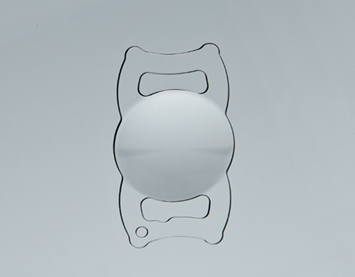SBL-3 Multifocal Intraocular Lens – P200020
This is a brief overview of information related to FDA’s approval to market this product. See the links below to the Summary of Safety and Effectiveness Data (SSED) and product labeling for more complete information on this product, its indications for use, and the basis for FDA’s approval.
Product Name: SBL-3 Multifocal Intraocular Lens
PMA Applicant: Lenstec, Inc.
Address: 1765 Commerce Avenue North, St. Petersburg, FL 33716
Approval Date: July 22, 2022
Approval Letter: Approval order
What is it?
The SBL-3 Multifocal Intraocular Lens (IOL) is an artificial lens permanently implanted inside the eye. The lens is intended to provide vision correction after the eye’s natural lens is removed because it has become cloudy (cataract).
How does it work?
The SBL-3 Multifocal IOL is intended to bend light rays to allow them to focus on the back surface of the eye (retina). The SBL-3 lens is a multifocal intraocular lens with two zones that focus light—one from objects far away (distance vision), and the other from objects close up (near vision).
When is it used?
The SBL-3 Multifocal IOL is used in adults who have cataracts, need eye surgery, and only have a small amount (one diopter or less) of abnormal curve to the cornea (astigmatism).
What will it accomplish?
The SBL-3 intraocular lens is used to replace the natural crystalline lens after that lens is removed due to cataracts. It improves near vision, which is important for tasks that require close up focus.The safety and effectiveness of the SBL-3 intraocular lens was studied in a randomized, controlled clinical trial. In that study, 495 patients had at least one working eye implanted with an intraocular lens, either a conventional monofocal IOL or the SBL-3 Multifocal IOL. At 6 and 12 months after surgery, the SBL-3 lens was found to provide improved near visual acuity and also provided comparable intermediate and distance visual acuity. Based on a patient questionnaire given at 6 and 12 months after surgery, the SBL-3 recipients also reported less use of near vision correction glasses or contact lenses than people who received the monofocal lens.
When should it not be used?
The SBL-3 Multifocal Intraocular Lens should not be used in patients who:
- Are not candidates for eye surgery
- Have any of the following:
- Glaucoma
- Microphthalmia
- Chronic severe uveitis
- Retinal detachment
- Corneal decompensation
- Diabetic retinopathy
- Iris atrophy
- A risk of complications during or after surgery
- Another condition identified by an ophthalmic surgeon based on their experience

